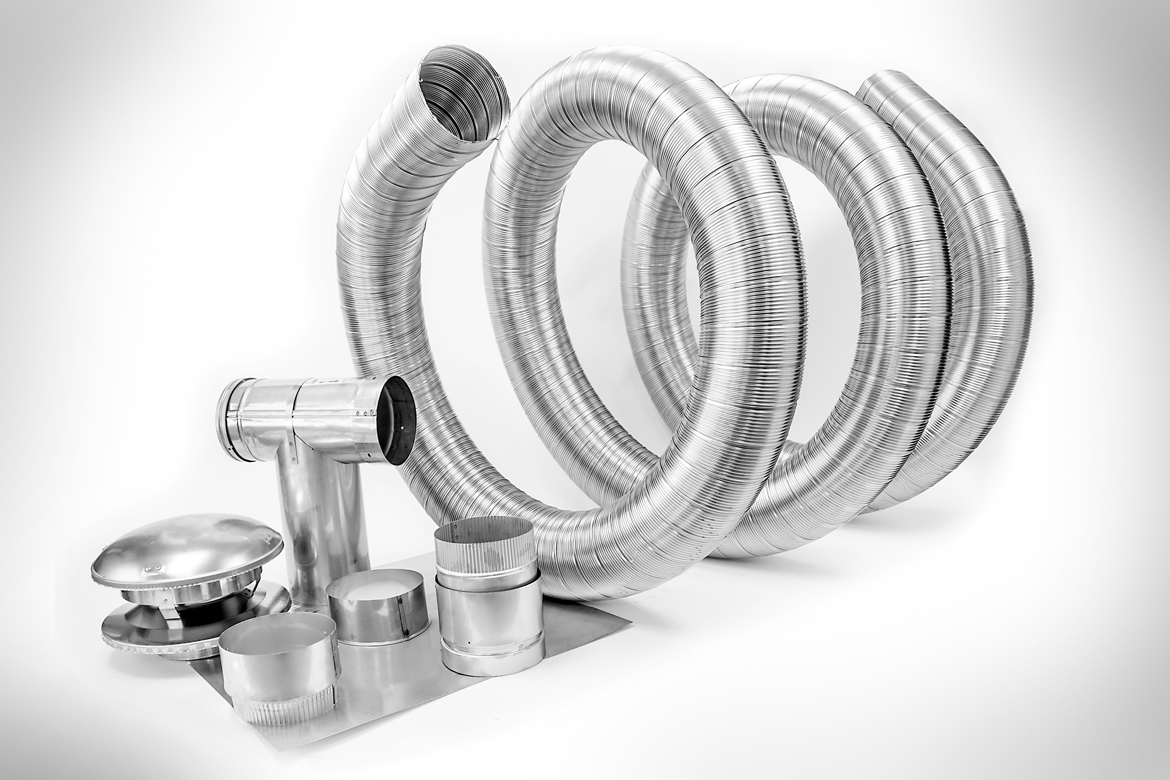CHIMNEY LINERS

New or replacement chimney liners
help to ensure safety and comfort.
Chimney liner functions
Protecting the house from heat transfer to combustibles. Unlined chimneys allowed heat to move through the chimney so rapidly that the adjacent woodwork caught fire in only 3 1/2 hours.
Protecting the masonry from the corrosive byproducts of combustion. In tests it was determined that if the flue gases were allowed to penetrate to the brick and mortar, the result would be a reduction in the usable life of the chimney. The flue gases are acidic in nature and literally eat away at the mortar joints from inside the chimney. As the mortar joints erode, heat transfers more rapidly to the nearby combustibles and dangerous gases such as carbon monoxide can leak into the living areas of the home.
Providing a correctly sized flue for optimum efficiency of appliances. Modern wood stoves and gas or oil furnaces require a correctly sized flue to perform properly. The chimney is responsible for not only allowing the products of combustion a passage out of the house, but the draft generated by the chimney also supplies the combustion air to the appliance. An incorrectly sized liner can lead to excessive creosote buildup in wood-burning stoves, and the production of carbon monoxide with conventional fuel.
A flue lining in a masonry chimney is defined as “A clay, ceramic, or metal conduit installed inside of a chimney, intended to contain the combustion products, direct them to the outside atmosphere, and protect the chimney walls from heat and corrosion.”
Here at Ace of Diamonds Chimney Hearth and Home we recommend Metal chimney liners, stainless steel or aluminum, which are primarily used to upgrade and repair existing chimneys. If properly installed and maintained, metal chimney liners are extremely safe and durable. Stainless steel is suitable for wood-burning, gas, or oil appliances, while the aluminum is an inexpensive alternative for certain medium efficiency gas applications only. It is usually required that high temperature insulation be used in conjunction with the liners for safety and performance considerations.
SERVICES
STOVES
FIREPLACES

